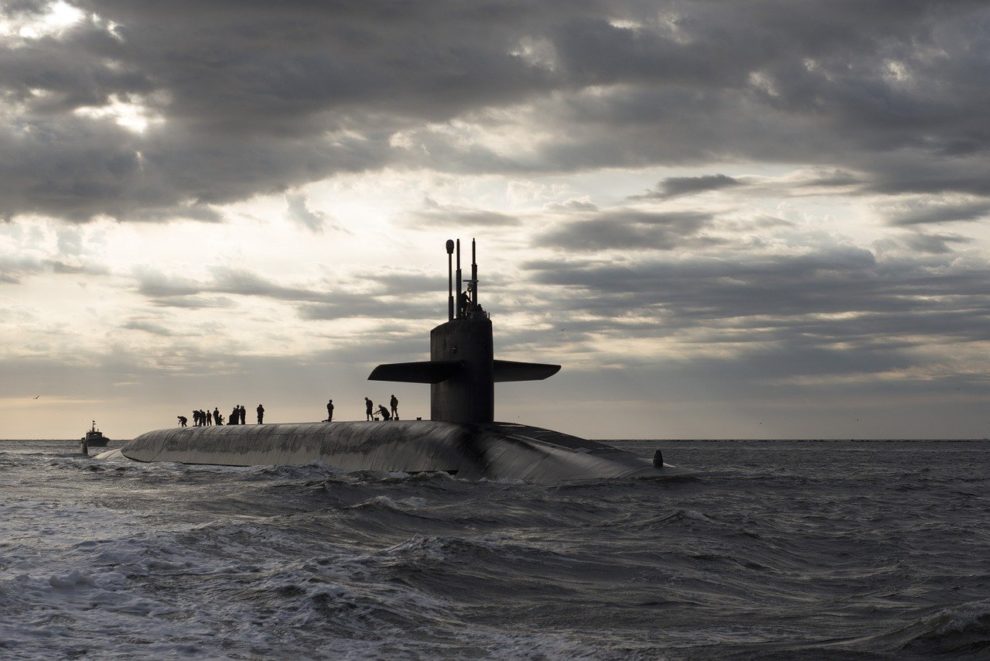Australia said Thursday the UK’s BAE Systems would build a fleet of nuclear-powered submarines, a key step in fulfilling the landmark AUKUS security pact between Canberra, London and Washington.
Australia’s Submarine Agency said BAE would produce the state-of-the-art vessels, which will be delivered from the early 2040s.
The agency didn’t reveal the exact number of submarines that will be built or financial details of the deal, but Australian defence officials have said the country would get at least five of the SNN-AUKUS class subs at a cost of billions of dollars.
The first of the vessels are expected to be built in Britain, and later ones at a shipyard in Adelaide, South Australia.
The deal is central to an effort to overhaul Australia’s military, as AUKUS members seek to check Chinese military expansion in the Asia-Pacific.
The subs will be quieter and stealthier than Australia’s existing fleet, and capable of deploying over vast distances without surfacing, posing a potent threat to any foe.
Although the subs will not carry nuclear weapons, the technology underpinning their nuclear-propelled engines has been a tightly held secret between the United States and Britain for more than 60 years.
More details are expected when Australian and British defence and foreign ministers meet jointly in Adelaide on Friday.
But the scale of the project is vast, and questions have been growing about whether Australia — with limited nuclear experience and a relatively small navy — can pull it off.
Australian officials believe some 20,000 workers will be needed for the homegrown nuclear industry — among them an army of technicians, metal workers, electricians and welders.
Australia has struggled to maintain a fleet of ageing diesel-electric subs plagued by design flaws and cost blowouts.
Successive Australian governments on both sides of the political spectrum have torn up their predecessor’s defence plans and started again, at enormous cost.
Because the submarines will take more than a decade to design and build, there is an added complication, with Australia expected to get at least three Virginia class nuclear-powered submarines from the United States in the interim.
In total, the AUKUS submarine project could cost up to Aus$368 billion (US$240 billion) over the next 30 years.
Some fear Donald Trump could scrap it completely if he returns to power next year.
In a joint statement AUKUS defence ministers tried to swat aside concerns that the project is dead before it hits the water.
“Australia, the United Kingdom and the United States remain fully committed to this shared endeavour,” said US defence chief Lloyd Austin, UK defence secretary Grant Shapps, and Australian defence minister Richard Marles.
“These steps to grow Australia’s submarine construction and maintenance capability are critical to the AUKUS partnership.”
BAE Systems already has a close relationship with the UK navy, and is responsible for building its Astute-class and Dreadnought-class nuclear-powered vessels.
It will also develop SNN-AUKUS class submarines for the UK’s Royal Navy and a Rolls Royce plant in the UK will produce the nuclear reactors that are eventually installed in both the UK’s and Australia’s submarines.
Earlier on Thursday, UK and Australian defence ministers inked a new defence agreement in Canberra.
The agreement stops short of a full mutual defence pact, which would bind one side to intervene if the other was attacked.
But it does include a “commitment to consult” about emerging threats and establishes a “status of forces agreement”, which makes it easier to host soldiers from the other nation.
The “status of forces” agreement makes it easier for Australian sailors to train on the UK’s nuclear subs, and for British crew to be based in Australia.
